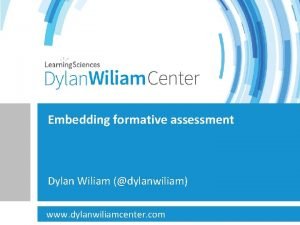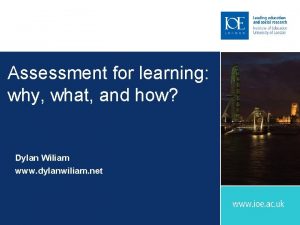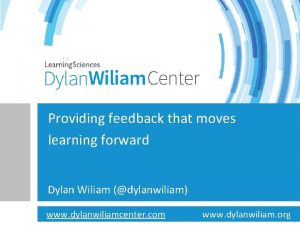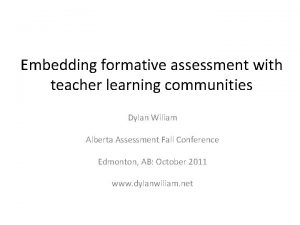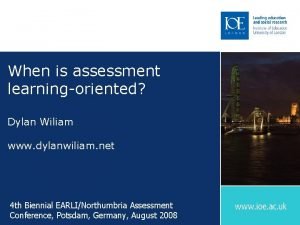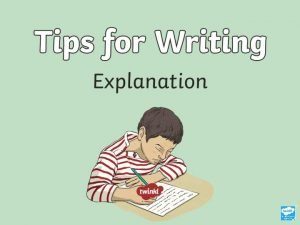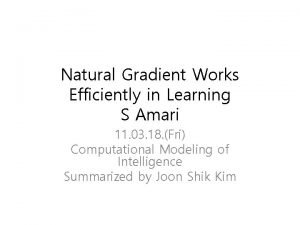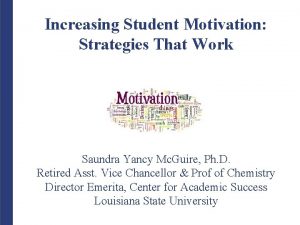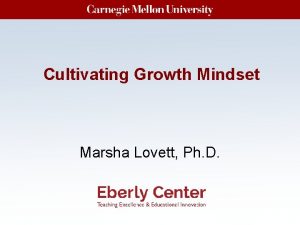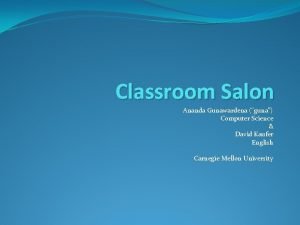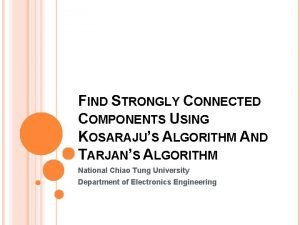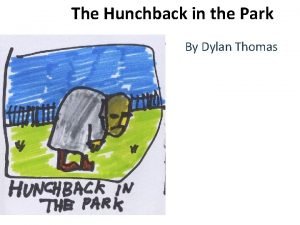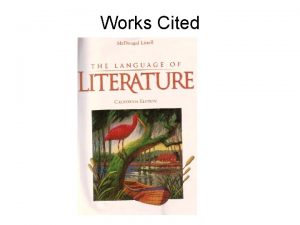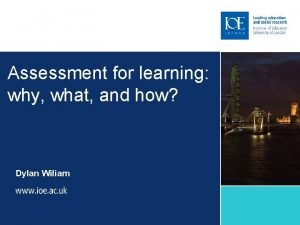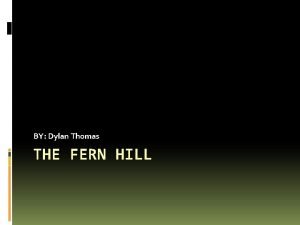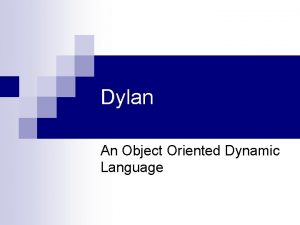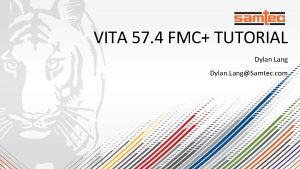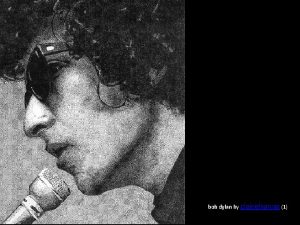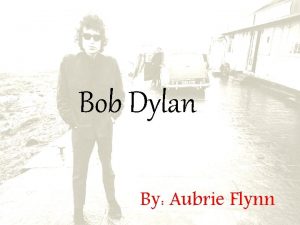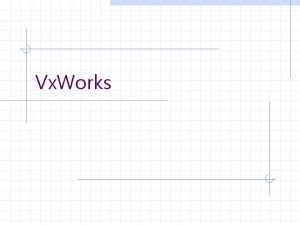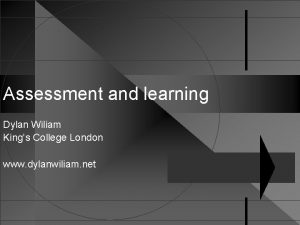Why and How Assessment for Learning Works Dylan















- Slides: 15

Why and How Assessment for Learning Works Dylan Wiliam (@dylanwiliam) www. dylanwiliamcenter. com

Formative assessment 2 • One principle about learning “If I had to reduce all of educational psychology to just one principle, I would say this: The most important single factor influencing learning is what the learner already knows. Ascertain this and teach him accordingly. ”(Ausubel, 1968 p. vi) • One fact about the world Students do not learn what we teach

Formative assessment as assessment 3 • Assessment is a procedure for making inferences (Cronbach, 1971) • Four elements of educational assessment – Designing ways in which we can get evidence relevant to student learning – Collecting the evidence – Interpreting the evidence – Using the evidence

Formative and summative assessment 4 • The formative-summative distinction is a classification of the kinds of inferences being made – Summative: inferences regarding an individual’s current, or future, status – Formative: inferences regarding the kinds of instructional activities likely to improve learning • No such thing as a formative or a summative assessment • And “prepositional permutations” are not helpful

An inclusive definition 5 An assessment functions formatively: “to the extent that evidence about student achievement is elicited, interpreted, and used by teachers, learners, or their peers, to make decisions about the next steps in instruction that are likely to be better, or better founded, than the decisions they would have taken in the absence of the evidence that was elicited. ” (Black & Wiliam, 2009 p. 9)

What is learning 6 • A change in the capacity of an organism to respond to stimuli in valued ways as a result of experience • A change in long-term memory – The fact that learners know something now does not guarantee that they will know it in six weeks’ time, but – The fact that they don’t know it now probably does mean that they will not know it in six weeks’ time

7 But what, exactly, is formative assessment?

Unpacking Formative Assessment 8 Where the learner is going Teacher Peer Student Clarifying, sharing, and understanding learning intentions Where the learner is now How to get the learner there Engineering effective discussions, tasks, and activities that elicit evidence of learning Providing feedback that moves learners forward Activating students as resources for one another Activating students as owners of their own learning

Two creation myths formative assessment 9 • Bottom up, from feedback research • Top down, from EEF toolkit • Meta-analysis (Kingston & Nash, 2011; 2015)

Relevant studies • • • Fuchs & Fuchs (1986) Natriello (1987) Crooks (1988) Bangert-Drowns, et al. (1991) Kluger & De. Nisi (1996) Black & Wiliam (1998) Nyquist (2003) Dempster (1991) Dempster (1992) • • • Elshout-Mohr (1994) Brookhart (2004) Allal & Lopez (2005) Köller (2005) Brookhart (2007) Wiliam (2007) Hattie & Timperley (2007) Shute (2008) Kingston & Nash (2011)

Educational Endowment Foundation toolkit 11 Intervention Cost Quality of evidence Extra months of learning Feedback ££ ★★★ +8 Metacognition and self-regulation ££ ★★★★ +8 Peer tutoring ££ ★★★★ +6 Early years intervention £££££ ★★★★ +6 One to one tuition ££££ ★★★★ +5 Homework (secondary) £ ★★★ +5 Collaborative learning £ ★★★★ +5 Phonics £ ★★★★ +4 Small group tuition £££ ★★★★ +4 Behaviour interventions £££ ★★ +4 Digital technology ££££ ★★★★ +4 Social and emotional learning

Recent meta-analytic findings 12 Content area N 95% confidence interval for effect size Lower Mean Upper 19 0. 14 0. 17 0. 20 4 0. 30 0. 32 0. 34 Science 17 0. 06 0. 19 0. 31 Total 40 Mathematics English Language Arts Mean effect size ≈ 0. 20 A big effect size Equivalent to a 50% to 70% increase in the rate of learning Kingston and Nash (2011, 2015)

Consequences of the definition 13 • Formative assessment is not a thing • Anyone—teacher, peer, learner, can be the agent of formative assessment; • The focus is on decisions, rather than data; • The next steps in instruction indicated may not be the best, or even successful; • The assessment need not actually change the decision made. • And, therefore, formative does not mean optimal, or even good

Critiques of formative assessment 14 • • • The measurement issue The definitional issue The domain dependency issue The effectiveness issue The professional development issue The system issue Bennett (2011)

A simple choice 15 • Keep searching for new ideas about what might and might not work, or • Focus on making sure that we are what we already know will help students learn more is being done in our classrooms
 Hey bye bye
Hey bye bye What is the aera
What is the aera Dylan wiliam formative assessment
Dylan wiliam formative assessment Safety at street works and road works pdf
Safety at street works and road works pdf Feedback dylan wiliam
Feedback dylan wiliam Dylan wiliam teacher learning communities
Dylan wiliam teacher learning communities What is assessment
What is assessment Cuadro comparativo e-learning y b-learning
Cuadro comparativo e-learning y b-learning Dont ask
Dont ask What is the purpose of an explanation
What is the purpose of an explanation Natural gradient works efficiently in learning
Natural gradient works efficiently in learning How learning works
How learning works How learning works
How learning works How learning works
How learning works Tarjan algorithm complexity
Tarjan algorithm complexity The hunchback in the park by dylan thomas
The hunchback in the park by dylan thomas

